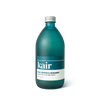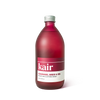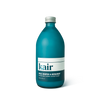How to freshen spring/summer clothes after storage
With spring in full bloom, and summer on its way, it’s time to dig out your lighter, brighter clothes and switch around your wardrobe. And with a few simple tips and tricks, it’s easy to awaken and renew even the dampest, dingiest pieces and make them feel fresh again.
Image source: IKEA
Why do clothes smell bad after storage?
Before you start your wardrobe refresh, it’s helpful to know why stored clothes can begin to smell bad. Mustiness is most commonly due to mildew (not mould, as is sometimes believed), which thrives in dark, moist environments, like drawers or wardrobes, and can get particularly pungent in the hot, humid months. Mildew can also develop if any of your clothes were damp when you packed them up.
How to banish mustiness from stored clothes
 As soon as you unpack them, hang your clothes outside to allow the sunlight and clean air to freshen them. If that doesn’t remove the odour, then you’ll have to pre-soak and wash them. To pre-soak, fill a bowl or basin with a solution of liquid detergent for up to 30 minutes (use our Signature Clothing Wash or Activewear Wash for cotton, linen or durable synthetics, and our Wool, Silk & Delicates Wash for delicate fabrics). Then wash in accordance with your garment’s care label instructions (on the correct cycle, at the recommended temperature - see our guide on washing machine cycles explained for the full details). We always recommend air drying over tumble drying, but if you can, dry outside, in the fresh air, to thoroughly banish mustiness. Finish with a spritz of our odour-neutralising finishing spray to lock in scent and infuse with long-lasting fragrance.
As soon as you unpack them, hang your clothes outside to allow the sunlight and clean air to freshen them. If that doesn’t remove the odour, then you’ll have to pre-soak and wash them. To pre-soak, fill a bowl or basin with a solution of liquid detergent for up to 30 minutes (use our Signature Clothing Wash or Activewear Wash for cotton, linen or durable synthetics, and our Wool, Silk & Delicates Wash for delicate fabrics). Then wash in accordance with your garment’s care label instructions (on the correct cycle, at the recommended temperature - see our guide on washing machine cycles explained for the full details). We always recommend air drying over tumble drying, but if you can, dry outside, in the fresh air, to thoroughly banish mustiness. Finish with a spritz of our odour-neutralising finishing spray to lock in scent and infuse with long-lasting fragrance.
Why do clothes go yellow after storage?
If you put away your clothes without properly washing them, you may notice yellowing that you weren’t expecting. This happens when oil, grime, dirt and bodily fluids settle within a fabric's fibres (for example, if only rinsed off with water, or with a weak detergent solution). The chemicals that remain can oxidise while in storage, which then turns into yellow spots. Summer heat can also set stains that weren’t visible at first. Over-bleaching can be another cause of yellow stains. Bleaching agents in mainstream detergents may promise to whiten fabrics, but will over time react to protein-induced stains, like sweat, making them appear yellower (especially noticeable after a long period in storage).
How to remove storage stains from clothes
To avoid yellowing in the first place, always clean your clothes before storing them away. But if yellowing has already happened, don’t panic: it’s simple to fix. As an alternative to oxygen bleach (which should never be used on delicate fabrics in particular, especially wool and silk), try adding a cup of distilled white vinegar to the rinse cycle to brighten naturally fabrics (and as an added bonus, absorb and neutralise mildewy odours). If you’re tackling particularly tough stains, or your clothes are woefully dingy, you can also pre-soak overnight in a solution of vinegar (1 part vinegar : 1 part water - to reduce the strong vinegar smell, try infusing the solution with lemon slices or a few drops of essential oil).
Now you know how to revive your clothes after storage. Here are our top tips for keeping them fresh all year round, so you never have to worry about mustiness or yellowness.
Top tips for keeping clothes fresh during and after storage 
TIP #1: Make sure your clothes are completely dry and clean before storing them away.
TIP #2: Avoid letting cedarwood blocks or chips come into direct contact with your clothes, as these can transfer oil onto the fabrics and stain them (the opposite of what you want).
TIP #3: Hang sachets of lavender, rosemary or clove inside your drawer or wardrobe.
TIP #4: Fill a sock with baking soda or coffee grounds to naturally deodorise and absorb lingering odours (simply pop the sock in your drawer or wardrobe with your clothes).
TIP #5: Spritz with finishing spray between washes to add fragrance and dissolve odours.


















